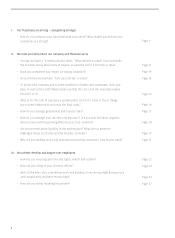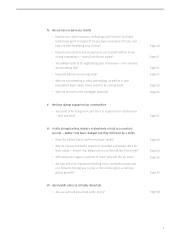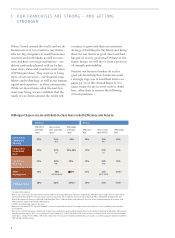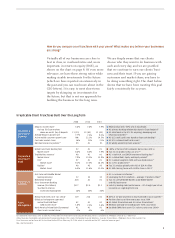JP Morgan Chase 2015 Annual Report Download - page 18
Download and view the complete annual report
Please find page 18 of the 2015 JP Morgan Chase annual report below. You can navigate through the pages in the report by either clicking on the pages listed below, or by using the keyword search tool below to find specific information within the annual report.-
 1
1 -
 2
2 -
 3
3 -
 4
4 -
 5
5 -
 6
6 -
 7
7 -
 8
8 -
 9
9 -
 10
10 -
 11
11 -
 12
12 -
 13
13 -
 14
14 -
 15
15 -
 16
16 -
 17
17 -
 18
18 -
 19
19 -
 20
20 -
 21
21 -
 22
22 -
 23
23 -
 24
24 -
 25
25 -
 26
26 -
 27
27 -
 28
28 -
 29
29 -
 30
30 -
 31
31 -
 32
32 -
 33
33 -
 34
34 -
 35
35 -
 36
36 -
 37
37 -
 38
38 -
 39
39 -
 40
40 -
 41
41 -
 42
42 -
 43
43 -
 44
44 -
 45
45 -
 46
46 -
 47
47 -
 48
48 -
 49
49 -
 50
50 -
 51
51 -
 52
52 -
 53
53 -
 54
54 -
 55
55 -
 56
56 -
 57
57 -
 58
58 -
 59
59 -
 60
60 -
 61
61 -
 62
62 -
 63
63 -
 64
64 -
 65
65 -
 66
66 -
 67
67 -
 68
68 -
 69
69 -
 70
70 -
 71
71 -
 72
72 -
 73
73 -
 74
74 -
 75
75 -
 76
76 -
 77
77 -
 78
78 -
 79
79 -
 80
80 -
 81
81 -
 82
82 -
 83
83 -
 84
84 -
 85
85 -
 86
86 -
 87
87 -
 88
88 -
 89
89 -
 90
90 -
 91
91 -
 92
92 -
 93
93 -
 94
94 -
 95
95 -
 96
96 -
 97
97 -
 98
98 -
 99
99 -
 100
100 -
 101
101 -
 102
102 -
 103
103 -
 104
104 -
 105
105 -
 106
106 -
 107
107 -
 108
108 -
 109
109 -
 110
110 -
 111
111 -
 112
112 -
 113
113 -
 114
114 -
 115
115 -
 116
116 -
 117
117 -
 118
118 -
 119
119 -
 120
120 -
 121
121 -
 122
122 -
 123
123 -
 124
124 -
 125
125 -
 126
126 -
 127
127 -
 128
128 -
 129
129 -
 130
130 -
 131
131 -
 132
132 -
 133
133 -
 134
134 -
 135
135 -
 136
136 -
 137
137 -
 138
138 -
 139
139 -
 140
140 -
 141
141 -
 142
142 -
 143
143 -
 144
144 -
 145
145 -
 146
146 -
 147
147 -
 148
148 -
 149
149 -
 150
150 -
 151
151 -
 152
152 -
 153
153 -
 154
154 -
 155
155 -
 156
156 -
 157
157 -
 158
158 -
 159
159 -
 160
160 -
 161
161 -
 162
162 -
 163
163 -
 164
164 -
 165
165 -
 166
166 -
 167
167 -
 168
168 -
 169
169 -
 170
170 -
 171
171 -
 172
172 -
 173
173 -
 174
174 -
 175
175 -
 176
176 -
 177
177 -
 178
178 -
 179
179 -
 180
180 -
 181
181 -
 182
182 -
 183
183 -
 184
184 -
 185
185 -
 186
186 -
 187
187 -
 188
188 -
 189
189 -
 190
190 -
 191
191 -
 192
192 -
 193
193 -
 194
194 -
 195
195 -
 196
196 -
 197
197 -
 198
198 -
 199
199 -
 200
200 -
 201
201 -
 202
202 -
 203
203 -
 204
204 -
 205
205 -
 206
206 -
 207
207 -
 208
208 -
 209
209 -
 210
210 -
 211
211 -
 212
212 -
 213
213 -
 214
214 -
 215
215 -
 216
216 -
 217
217 -
 218
218 -
 219
219 -
 220
220 -
 221
221 -
 222
222 -
 223
223 -
 224
224 -
 225
225 -
 226
226 -
 227
227 -
 228
228 -
 229
229 -
 230
230 -
 231
231 -
 232
232 -
 233
233 -
 234
234 -
 235
235 -
 236
236 -
 237
237 -
 238
238 -
 239
239 -
 240
240 -
 241
241 -
 242
242 -
 243
243 -
 244
244 -
 245
245 -
 246
246 -
 247
247 -
 248
248 -
 249
249 -
 250
250 -
 251
251 -
 252
252 -
 253
253 -
 254
254 -
 255
255 -
 256
256 -
 257
257 -
 258
258 -
 259
259 -
 260
260 -
 261
261 -
 262
262 -
 263
263 -
 264
264 -
 265
265 -
 266
266 -
 267
267 -
 268
268 -
 269
269 -
 270
270 -
 271
271 -
 272
272 -
 273
273 -
 274
274 -
 275
275 -
 276
276 -
 277
277 -
 278
278 -
 279
279 -
 280
280 -
 281
281 -
 282
282 -
 283
283 -
 284
284 -
 285
285 -
 286
286 -
 287
287 -
 288
288 -
 289
289 -
 290
290 -
 291
291 -
 292
292 -
 293
293 -
 294
294 -
 295
295 -
 296
296 -
 297
297 -
 298
298 -
 299
299 -
 300
300 -
 301
301 -
 302
302 -
 303
303 -
 304
304 -
 305
305 -
 306
306 -
 307
307 -
 308
308 -
 309
309 -
 310
310 -
 311
311 -
 312
312 -
 313
313 -
 314
314 -
 315
315 -
 316
316 -
 317
317 -
 318
318 -
 319
319 -
 320
320 -
 321
321 -
 322
322 -
 323
323 -
 324
324 -
 325
325 -
 326
326 -
 327
327 -
 328
328 -
 329
329 -
 330
330 -
 331
331 -
 332
332
 |
 |

1616
many of the processes we implemented for
CCAR and AML/KYC had to be done quickly,
and many were eectively handled outside
our normal processes. Eventually, CCAR will
be embedded into our normal forecasting
and budgeting systems. And we are trying to
build the data collection part of KYC into a
utility that the entire industry can use – not
just for us and our peer group but, equally
important, for the client’s benefit (the client
would essentially only have to fill out one
form, which then could be used by all banks).
In addition, throughout the company, contin-
ually creating straight-through processing,
online client service and other initiatives
will both improve the client experience and
decrease our costs.
What is all this talk of regulatory optimization, and don’t some of these things hurt clients?
When will you know the final rules?
In the last year, we took some dramatic
actions to reduce our GSIB capital surcharge,
which we now have successfully reduced
from 4.5% to an estimate of 3.5%. These
steps included reducing non-operating
deposits by approximately $200 billion, level
3 assets by $22 billion and notional deriva-
tives amounts by $15 trillion. We did this
faster than we, or anyone, thought we could.
We still will be working to further reduce the
GSIB surcharge, but any reduction from this
point will take a few years.
Like us, most banks are modifying their
business models and client relationships to
accomplish their regulatory objectives. We
are doing this by managing our constraints
at the most granular level possible – by
product, client or business. Clearly, some
of these constraints, including GSIB and
CCAR, cannot be fully pushed down to
the client. Importantly, we are focused on
client-friendly execution – and we recog-
nize that these constraints are of no direct
concern to clients.
To protect the company and to meet standards of safety and soundness, don’t you have to earn a
fair profit? Many banks say that the cost of all the new rules makes this hard to do.
Having enough capital and liquidity, and
even the most solid fortress controls, doesn’t
make you completely safe and sound. Deliv-
ering proper profit margins and maintaining
profitability through a normal credit cycle
also are important. A business does this by
having the appropriate business mix, making
good loans and managing expenses over time.
Clearly, some of the new rules create
expenses and burdens on our company.
Some of these expenses will eventually be
passed on to clients, but we have many ways
to manage our expenses. Simplifying our
business, streamlining our procedures, and
automating and digitizing processes, some of
which previously were being done eectively
by hand, all will bring relief. For example,
In the new world, our company has approxi-
mately 20 new or significantly enhanced
balance sheet and liquidity-related regulatory
requirements – the most critical ones are the
GSIB capital surcharge, CCAR, the Liquidity
Coverage Ratio, the Supplementary Leverage
Ratio and Basel III capital. Banks must neces-
sarily optimize across these constraints to be
able to meet all their regulatory requirements
and, importantly, earn a profit. Every bank
has a dierent binding constraint, and, over
time, that constraint may change. Currently,
our overriding constraint is the GSIB capital
surcharge. Our shareholders should bear in
mind that the U.S. government requires a
GSIB capital surcharge that is double that
of our international competitors. And this
additional charge may ultimately put some
U.S. banks at a disadvantage vs. international
competitors. This is one reason why we
worked so hard to reduce the GSIB capital
surcharge – we do not want to be an outlier
in the long run because of it.
